Irish Christmas Traditions and Their Ancient Origins: Unearthing Yuletide Rituals
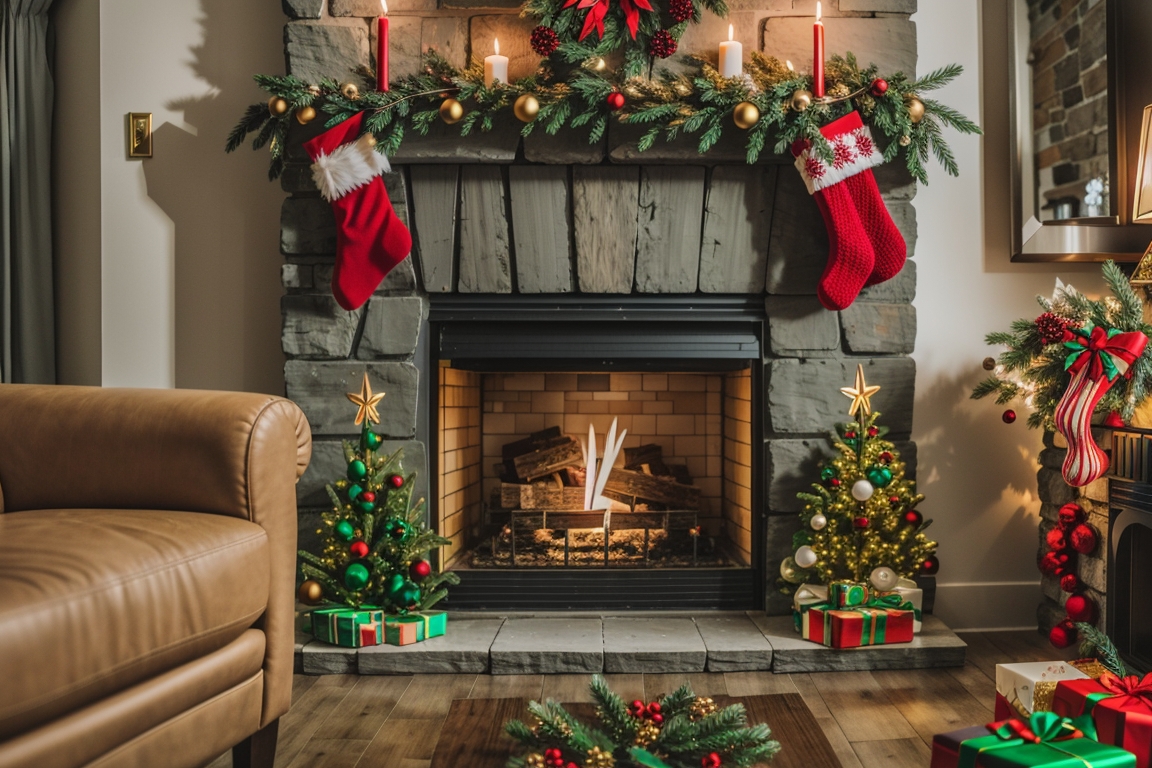
Updated On: April 07, 2024 by Shaimaa Olwan
Irish Christmas traditions have been celebrated for centuries, many of which have mysterious and storied origins. These customs create a festive atmosphere that connects present-day celebrations with the ancient past. From the spiritual significance of key dates to the adornment of homes with traditional decorations, these age-old practices are a testament to the enduring nature of Irish culture. They weave together the threads of history, storytelling, and religious observance, creating a rich tapestry of festive customs that are uniquely Irish.
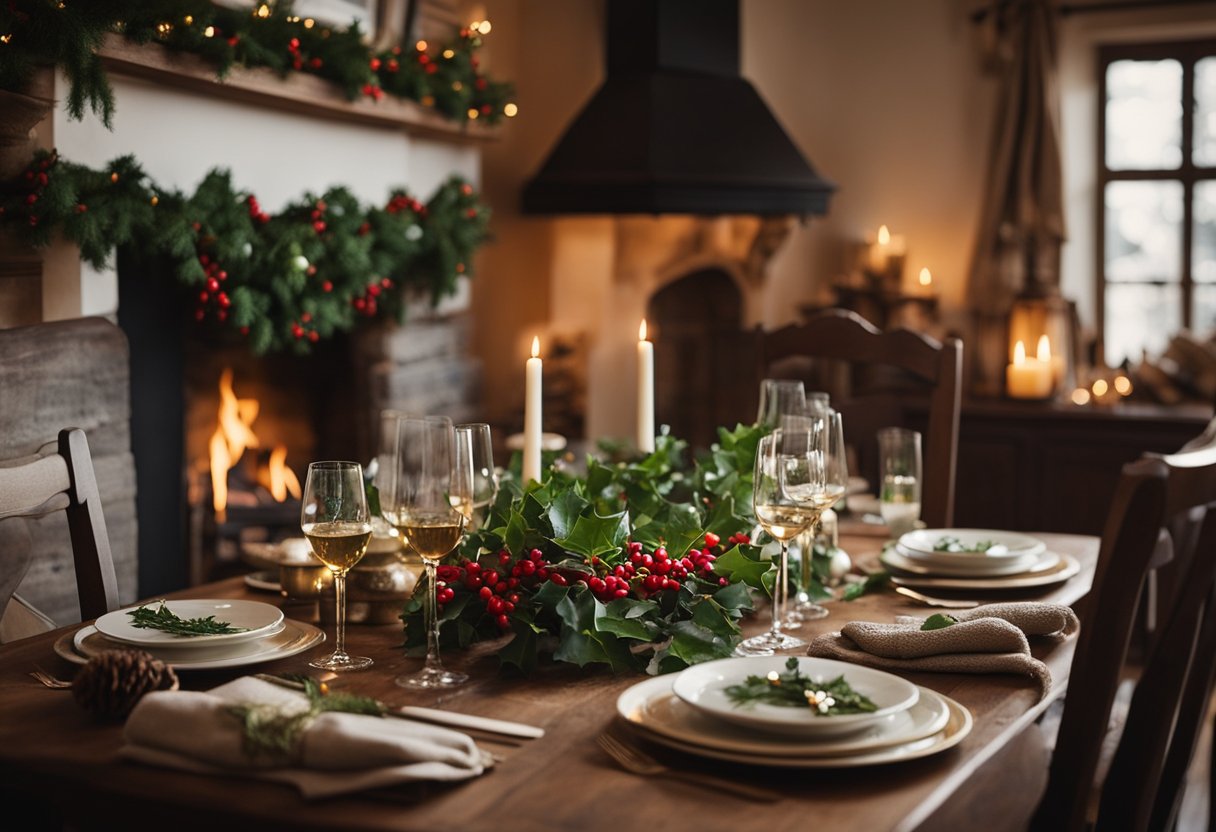
Among these time-honoured traditions, the lighting of candles, displays of holly wreaths, and the preparation of special feasts take centre stage, connecting communities and families. At the same time, shared rituals like ‘Wren Day’ and ‘Nollaig na mBan’ highlight the significance of music, dance, and the role of women in holiday festivities. While these customs have ancient roots, they continue to evolve, influenced by the diaspora and modern practices, ensuring that the celebration of Christmas in Ireland remains a dynamic and integral part of Irish cultural identity.
Table of Contents
The Historical Origins of Irish Christmas Traditions
The fabric of Irish Christmas traditions is woven from threads both Christian and ancient, blending beliefs and customs into a rich tapestry of festive celebration that echoes through the ages.
Influence of Christianity on Irish Festivities
Christianity arrived in Ireland in the early 5th century, bringing with it new practices and feasts that would be interlaced with existing traditions. The celebration of Christmas—marking the birth of Jesus Christ—was introduced to our Irish ancestors during this time. The Feast of the Immaculate Conception on 8 December traditionally signals the beginning of the Christmas season in Ireland, a time for placing decorations and Christmas trees in our homes.
Winter Solstice and the Integration of Pagan Traditions
Before the advent of Christianity, Irish society was deeply connected to the natural world, celebrating the winter solstice, which marks the shortest day and longest night of the year. The ancient site of Newgrange in County Meath is aligned with the rising sun on the solstice, emphasising the importance of this time to our forebears. Pagan festivities, honouring the rebirth of light, were seamlessly integrated into Christmas celebrations, coalescing in customs that bring warmth to the dark days of winter.
The Spiritual Significance of Key Dates
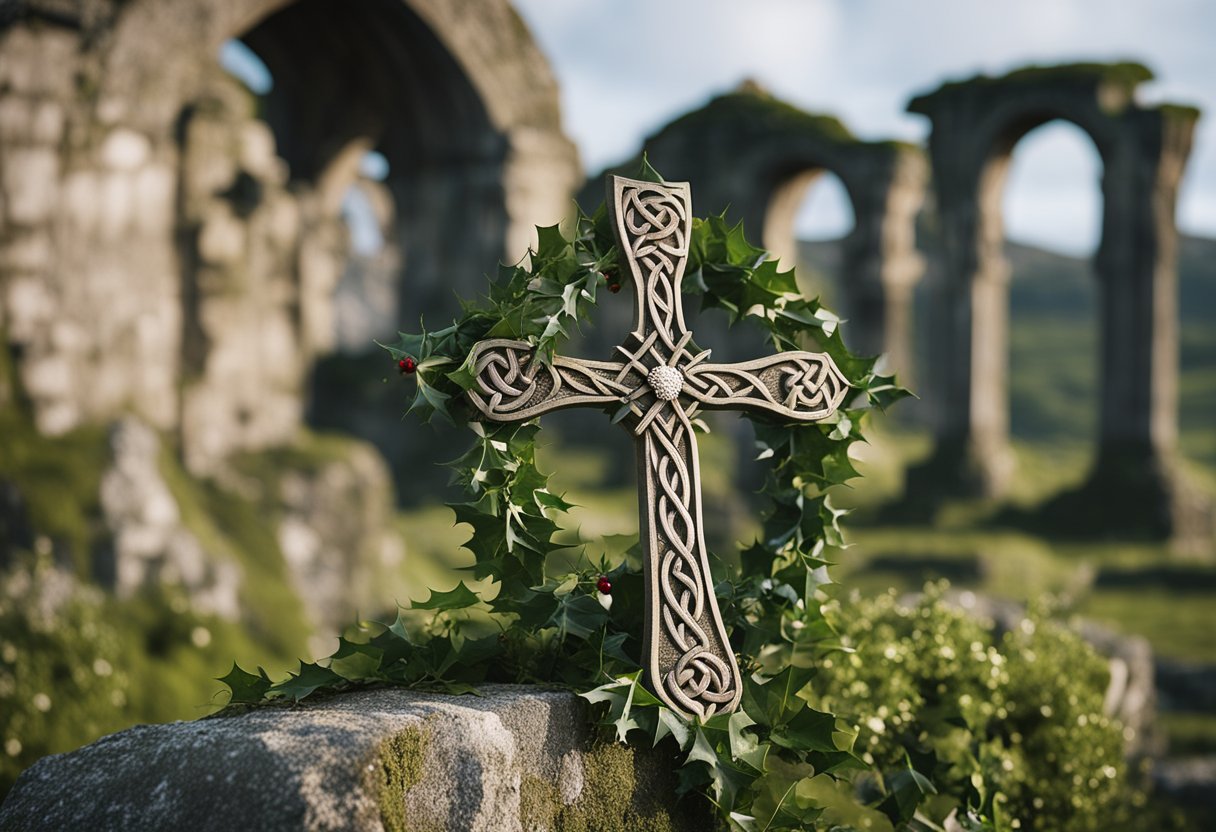
As we explore the traditions of Irish Christmas, it’s essential to understand the spiritual significance of key dates in the festive calendar, which resonate with historical and cultural importance.
Advent and Preparation
Advent marks the beginning of the Christmas season, commencing on the fourth Sunday before 25 December. This period is significant for its emphasis on preparation and anticipation of the birth of Jesus Christ. It’s a time of reflection and waiting, which harkens back to the Penal Times when the Irish preserved their faith despite suppression. Displays of advent wreaths, each candle denoting a week’s passage, are a common sight, symbolising hope and expectation.
Christmas Eve and Midnight Mass
On Christmas Eve, anticipation culminates as families gather to attend Midnight Mass, a pivotal community event. This late-night service is steeped in tradition and celebrates the Holy Family, with particular consideration given to Mary, Joseph, and the newborn Jesus. Historically, Midnight Mass offered a rare, sanctioned opportunity for communal worship during the Penal Times, often held in secret locations to evade anti-Catholic laws.
St. Stephen’s Day and its Customs
Following Christmas, St. Stephen’s Day on 26 December is ingrained with customs like the Wren Boys’ procession. This tradition involves groups parading through towns, often in costumes, commemorating St. Stephen, the first Christian martyr. The day has evolved into a time for charity and community bonding, where the integral values of solidarity and generosity take centre stage, reflecting deeper-seated beliefs nurtured over centuries.
Traditional Decorations and Their Symbolism
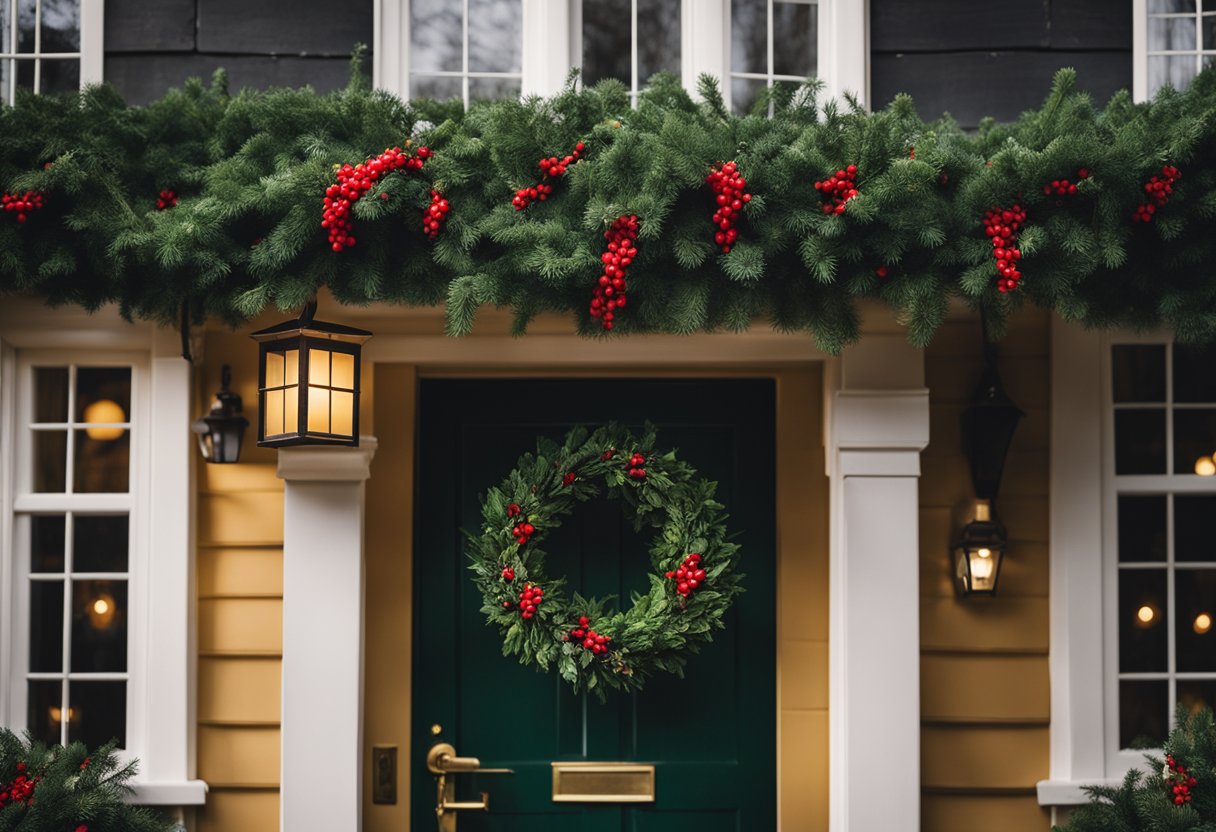
In Ireland, Christmas decorations are more than mere festive adornments. They carry deep-seated meanings and reflect a nation’s historical affinity with nature and spirituality.
Holly, Ivy, and the Candle in the Window
Holly and ivy hold a significant place in Irish Christmas traditions, both symbolising hope and bringing protection and good fortune to the household. The prickly leaves of holly were thought to capture evil spirits, preventing them from entering the home, while ivy represented eternal life. A candle in the window was traditionally lit to guide Mary and Joseph on their journey or to welcome a weary traveller—a sign of Irish hospitality during the festive season.
The Laden Table and Christmas Crib
The laden table is a centrepiece of the Irish Christmas, groaning with food to signify abundance and hospitality. Carefully prepared, this display is not only about feeding guests but also a gesture of goodwill to those less fortunate. A Christmas crib, on the other hand, is a humble depiction of the Nativity scene, often handmade and placed prominently to remind us of the religious essence of the holiday. Together, these decorations and traditions form the tapestry of an Irish Christmas, intertwining the threads of common goodwill and religious faith.
Festive Food and Feasting Traditions
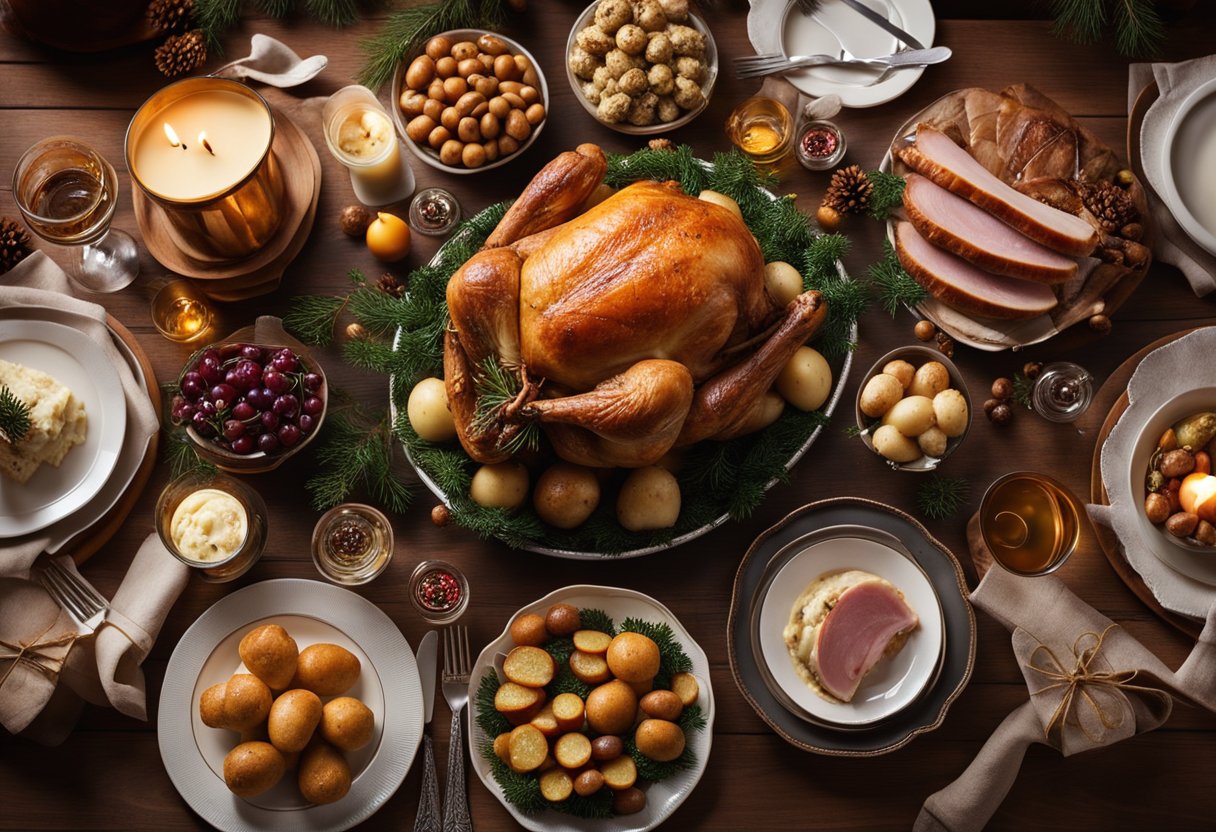
In Ireland, the Christmas feast has a rich historical tapestry, evolving from ancient customs to the modern-day table laden with an array of festive dishes.
From Goose to Turkey: A Culinary Evolution
The centrepiece of the traditional Irish Christmas meal has transitioned from goose to turkey over the centuries. The goose was once the bird of choice for the Yuletide feast. It was a customary practice for Irish families to prepare a goose, richly fattened, for the Christmas table. The line of tradition then shifted towards turkey, a bird that wasn’t native to Ireland but became popular due to its size and the amount of meat it provided for large families. Besides these feathered dishes, ham is another staple, often glazed with honey or clove, for a sweet and savoury balance.
Desserts and Sweet Treats: Puddings and Pies
No Irish Christmas dinner is complete without a table boasting desserts worthy of the occasion. A must-have is the Christmas pudding, also known as plum pudding, despite the common absence of actual plums in the recipe. This rich, spiced pudding is typically made from a mix of dried fruits and is ceremoniously lit with brandy before serving. Another sweet staple, mince pies, are filled with a mixture of minced fruits and spices encapsulated in delicate pastry, traditionally consumed throughout the festive period. Not to forget are the assortments of chocolates that add an extra touch of indulgence to the Christmas celebrations.
Irish Seasonal Entertainment
As we explore Irish Christmas traditions, the entertainment customs stand as a testament to the rich cultural tapestry of Ireland. These traditions offer a window into Ireland’s past, with entertainment ranging from the ancient practice of Hunting the Wren to the modern-day enjoyment of Pantos and Christmas Markets.
Wren Boys and Hunting the Wren
In the tradition known as Hunting the Wren, groups of boys and young men, called Wren Boys, would dress in straw masks and motley clothing, travelling from house to house, singing, dancing, and playing music. This ritual takes place on St. Stephen’s Day, 26 December, and has roots in Celtic mythology. The captured wren, often represented by a fake bird in modern times, is paraded around town on a pole as part of a larger celebration involving the whole community.
Pantos and Christmas Markets
Come the festive season, pantomimes or ‘pantos’ light up theatres across Ireland. These theatrical performances, traditionally comedic and geared for family entertainment, often play on well-known fairy tales with a twist and are known for their audience participation. Beyond the enchanting world of theatre, Irish Christmas Markets bring communities together, offering handcrafted goods, hot food, and the warm glow of holiday lights. The markets become a bustling hub of joviality, perfect for experiencing a traditional Irish Christmas filled with laughter and joy.
Christmas Day in Ireland
On Christmas Day in Ireland, cherished customs bring warmth to the midwinter celebration, from bracing swims to hearty feasts that gather families together.
The Custom of Christmas Day Swim
One of the most invigorating Irish traditions is the Christmas Day swim, which sees us take a dip in the frigid waters around our coastlines. Throngs venture into sometimes icy seas, often in aid of charity, reaffirming a sense of community and resilience. This tradition typically orchestrated at popular spots such as the Forty Foot in Dublin, is both a test of fortitude and a festive spectacle.
Family Gatherings and the Christmas Dinner
The cornerstone of Christmas Day in Ireland is the time spent with family. Houses are filled with the aroma of roasting meats and the chatter of loved ones reuniting. The table becomes the centre of joy, laid with a lavish spread: golden, roasted potatoes, Brussels sprouts, and stuffing alongside the centrepiece of the Christmas turkey. This dinner not only satiates the appetite but fortifies the bonds between us as we share in a meal that has been a staple of our culture for generations.
Rituals and Practices of Giving
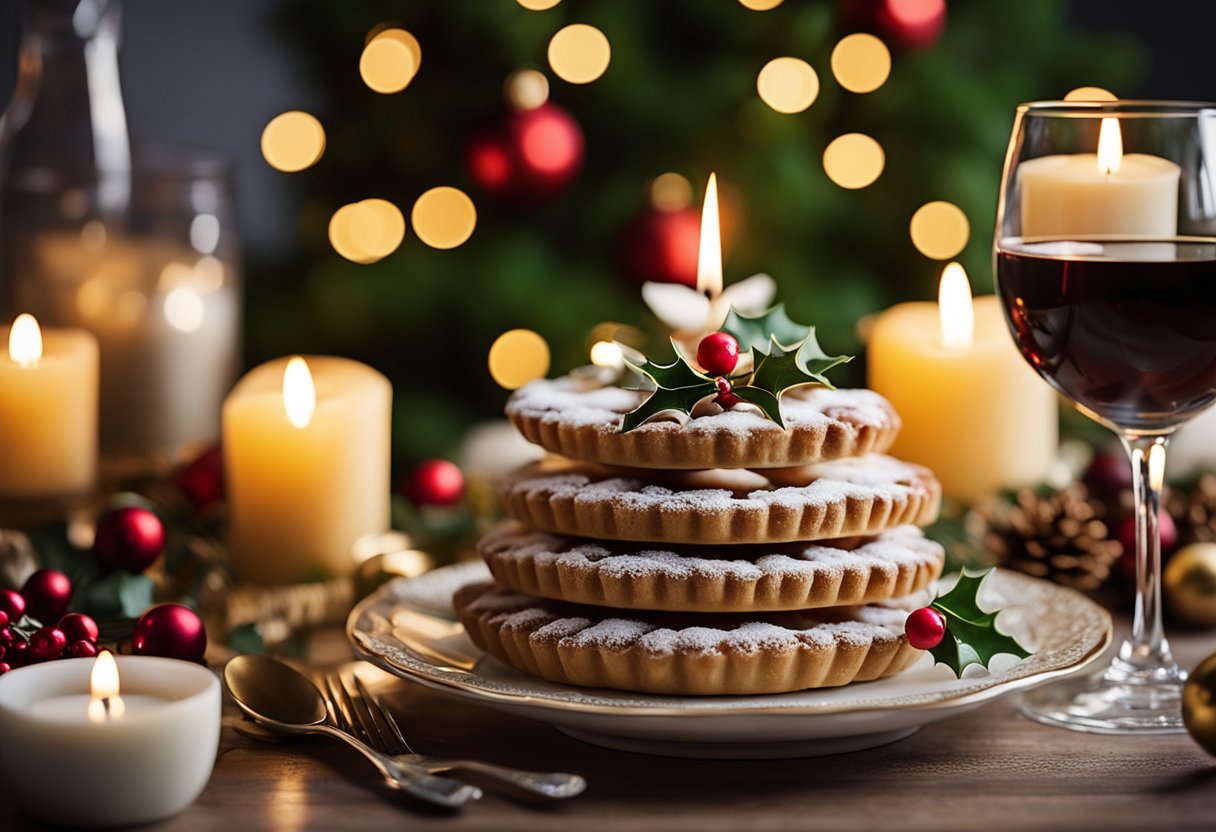
In Irish tradition, the act of giving during Christmas extends beyond the exchange of physical gifts to include gestures of goodwill, embodying a spirit of generosity.
Exchanging of Gifts and Christmas Cards
The custom of giving presents at Christmas is a time-honoured practice in Ireland. Influenced by both ancient Celtic traditions and Christian beliefs, the giving of gifts symbolises the presentation of offerings during the winter solstice and the gifts brought by the three wise men in the Nativity story. These are thoughtful expressions of love, often wrapped and placed beneath the Christmas tree to be opened on Christmas morning.
Christmas cards serve as another way of expressing sentiments during the festive season. Sending Christmas cards remains a popular tradition, with cards featuring winter landscapes, religious symbols, or festive designs. They reflect a tangible connection in our modern world, carrying messages from afar to friends and family, sharing news and goodwill.
Santa Claus and the Late Late Toy Show
Santa Claus, known in Ireland as Daidí na Nollag, is the beloved figure anticipated by children across the country. On Christmas Eve, it is customary for children to hang stockings and leave out mince pies and a pint of Guinness for Santa, paired with a carrot for his reindeer. The magic of Santa Claus represents the pinnacle of giving in the festive season, as he embodies the joy of surprise and the satisfaction of making others happy.
A unique Irish pre-Christmas event that captures the hearts of both children and adults is the Late Late Toy Show. This annual television spectacle showcases the season’s most popular toys, and entertaining performances and, most importantly, is known for its charitable efforts. It has become a tradition in itself, signalling the official start of the festivities in many Irish households, where families gather to watch and celebrate the generosity of spirit that the show promotes.
In Ireland, the giving of selection boxes filled with an assortment of sweets adds a further touch of indulgence and delight to the season’s traditions. These boxes are often exchanged among friends and family, evoking fond childhood memories and creating new ones.
Illuminations and Christmas Trees
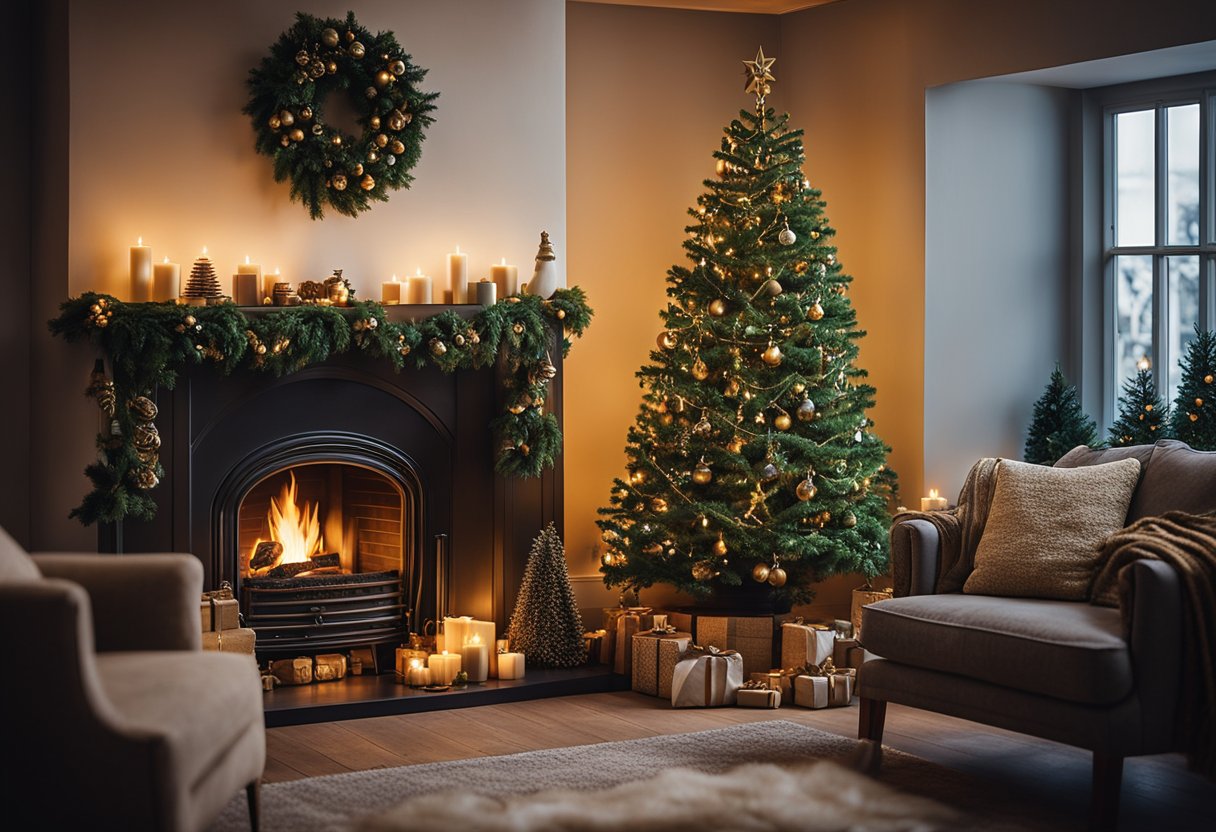
In Ireland, the traditional practice of illuminating the home and the iconic Christmas tree has deep historical roots with numerous customs imbued with significance and communal spirit.
The Ritual of Lighting and Decorations
In days gone by, our ancestors embraced the ritual of light during the darkest time of the year. Candlelit windows served as beacons of welcome to Mary and Joseph, as well as signalling hospitality to travellers. Today, this gesture lives on through the sparkling Christmas lights that adorn the streets and houses, casting a warm and inviting glow. In rural regions, a solitary candle placed in the window remains a poignant symbol, connecting the present with the age-old customs of our forebears.
The Christmas Tree: From Sapling to Centrepiece
The tradition of the Christmas tree as a centrepiece goes beyond decoration; it represents continuity and the cyclical nature of life. Early customs of bringing greenery indoors have evolved into the modern Christmas tree, an evergreen festooned with baubles, tinsel, and lights. The journey of the Christmas tree, from its humble outdoor beginnings to standing proudly in our living spaces, mirrors the mingling of cultural practices over the centuries. In Ireland, the practice of decorating trees for Christmas likely found its foothold in the Victorian era, reflecting a confluence of influences from abroad.
The Role of Music and Caroling
Music and carolling hold a significant place in Irish Christmas traditions, stemming from a long-standing historical connection to the Celtic Yuletide and the Christian faith. These tuneful practices not only elevate the festive spirit but also preserve Ireland’s rich heritage.
Traditional Carols and Advent Music
In the lead-up to Christmas, traditional carols strongly feature in Irish festivities, many of which are steeped in ancient origins with layers of both pagan and Christian symbolism. These carols serve as a musical countdown during Advent, building anticipation for the celebration of Christmas. Historically, carols like the “Wexford Carol” can trace their heritage back as far as the 12th century, making them an integral part of Ireland’s musical canon. During Advent, it is not uncommon to hear these harmonised carols uplifting the communal spirit at local gatherings, churches, and homes. The resonance of these tunes is not just melodic—it’s deeply cultural, passed down through generations and often performed in the Irish language.
Christmas Eve and Day Performances
On Christmas Eve and Christmas Day, carols are omnipresent. It’s a time when communities, families, and performers partake in musical celebrations that range from informal singalongs to professional renditions of carols in churches and concert halls. These performances are more than mere entertainment; they are a cherished tradition, believed to bring blessings to the household. On streets and in markets, we often find musicians serenading crowds against the backdrop of festive lights. The allure of carolling on these days particularly embodies the warmth and conviviality of Irish Christmas, connecting us to a tradition that transcends time and continues to be an essential expression of our Christmas revelry.
Little Christmas and Women’s Role in Festivities
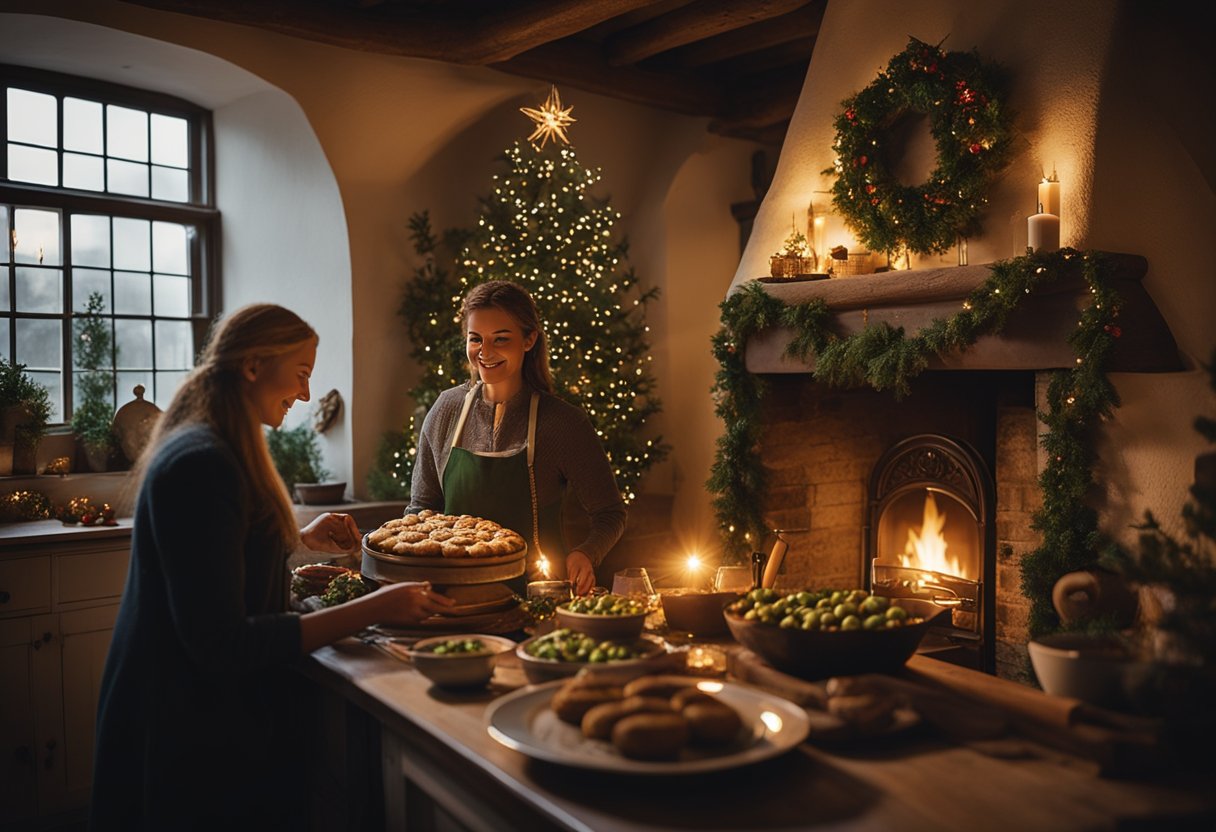
Little Christmas, also known as Nollaig na mBan in Ireland, marks an important tradition that honours the contributions of women to the festive season. Celebrated on 6 January, this date coincides with Epiphany, representing the official closure of the Christmas period.
Nollaig na mBan and Female-Centred Celebrations
In Ireland, Nollaig na mBan, which translates to ‘Women’s Christmas,’ is a day when the traditional roles are often inverted to give women a rest from their holiday labours. This custom has historical roots where on the Twelfth Night of Christmas, women would gather to enjoy their own feast, leaving the men to handle the household duties. Recognised as a gesture of appreciation for women’s efforts throughout the holiday season, this day is about celebration and relaxation for women, usually involving gatherings where women share food, gifts, and camaraderie.
Epiphany and the Official End of the Season
The Feast of the Epiphany, also known as Twelfth Night, signifies the end of the Christmas festivities. Traditionally, it’s when the Three Wise Men were believed to have visited the infant Jesus, thus incorporating a significant religious heritage into the date of 6 January. In Ireland, the occasion is intertwined with Nollaig na mBan, deepening the cultural significance of the day as it marks the transition back to everyday life following the twelve days of Christmas.
Through these customs, the importance of women’s contributions to the merrymaking and the closure of the Christmas season are recognised and celebrated, preserving an aspect of Ireland’s rich cultural tapestry.
Modern Christmas Influences and the Irish Diaspora
As we explore modern Christmas influences, it’s apparent that German customs and the global Irish diaspora have played pivotal roles in shaping contemporary Irish Christmas traditions.
Influence from Germany and the Wider World
Germany’s impact on Christmas is widely recognised, conceptually and practically. Advent calendars and Christmas markets, inspired by German tradition, now feature prominently in the Irish festive season. These have not only brought about a change in how we celebrate Christmas but also introduced new culinary delights and decorative trends that meld seamlessly with our own traditions.
Similarly, aspects of the wider world have found a place at Irish tables and in Irish hearts. The exchange of Christmas cards, for example, a custom adopted from the UK, is practised just as fervently in Ireland. Collectively, these influences have created a festive tapestry that reflects both our rural roots and a contemporary edge.
Christmas Celebrations Among the Irish Abroad
The Irish diaspora is vast, and with it comes the spread of our culture, including our Christmas traditions. Irish communities abroad have established themselves as cultural enclaves, where they continue to celebrate with a Nollaig spirit, fostering rural traditions like the Wren Boys within urban landscapes.
From New York to Sydney, the diaspora has made it a point to keep our heritage alive, carrying forward rituals such as Midnight Mass and the Christmas Day Swim with gusto. Moreover, they’ve integrated local customs, creating unique blends of Irish Christmas celebrations that pay homage to both their homeland and their new surroundings.
In modern times, with families spread across the globe, traditions like the lighting of a candle in the window have taken on new significance, representing a beacon for those far from home. The diaspora not only preserves our customs but also reinforces the bond between Ireland and the world.
Frequently Asked Questions
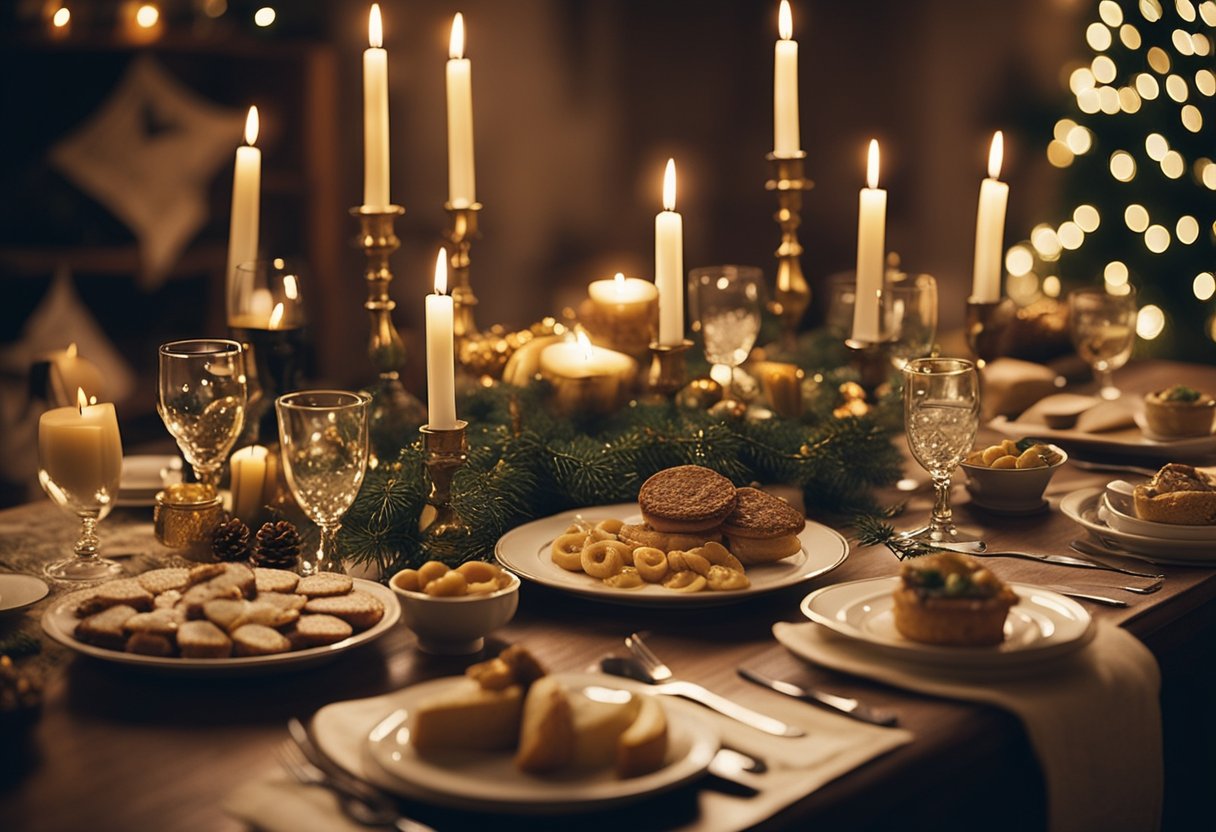
In this section, we address some of the key enquiries about the rich tapestry that makes up Irish Christmas traditions and their ancient origins.
What are the most enduring Irish Christmas culinary customs?
One of the centrepieces of Irish Christmas cuisine is the Christmas pudding, a rich dessert made from dried fruits, suet, and spices, traditionally prepared weeks in advance. Another enduring custom is enjoying spiced beef, a dish unique to Cork, which is typically served cold and sliced as part of the festive feasting.
How did the Celtic festivities influence modern Christmas celebrations in Ireland?
The influence of Celtic festivities is evident in modern Irish Christmas celebrations. The Celtic festival of Winter Solstice marks the shortest day of the year and is closely tied to traditions such as the Yule Log, a symbol of warmth and light, which has translated into the burning of a log or candle during Christmas to herald the return of longer days.
What role does the candle in the window play during an Irish Christmas?
The candle in the window is a poignant Irish Christmas tradition, symbolising a beacon of welcome for Mary and Joseph on their journey to Bethlehem. It’s also a historical signal of the safe harbour for priests during penal times when Catholic Masses were illegal.
Which symbols are uniquely associated with the Irish Christmas tradition?
Unique symbols of an Irish Christmas include the ring of holly placed on doors, reflecting the plant’s abundance at Christmas time, and the tradition of the Wren Boys on St. Stephen’s Day, where revellers dress up and visit homes to sing and dance, honouring the “wren’s” role in Irish folklore.
Can you outline the chronological development of Christmas celebrations in Ireland?
The chronological development of Christmas celebrations in Ireland began with the ancient Celtic festival of Winter Solstice, evolving through the introduction of Christianity, which layered Saint’s feasts and Masses over pre-existing pagan rituals. Over time, these melded into the rich blend of traditions we recognise today, with the added Victorian influence of decorations, cards, and gift-giving.
What are some of the amusing traditions associated with an Irish Christmas?
Amongst the amusing traditions is the “12 Pubs of Christmas,” where friends venture out together, visiting 12 pubs in one night, often wearing festive costumes. Another charming custom is the morning swim on Christmas Day, where the brave and bold take a dip in the freezing sea to celebrate the day.






